Slow banjo songs have a timeless appeal, casting a spell with their unique rhythm and resonating notes. These songs, often rooted in folk and country traditions, carry a deep emotional charge, invoking a sense of nostalgia and peace. The banjo, with its distinctive twang, is capable of conveying a wide range of moods, making it ideal for slow and introspective compositions. This document will explore some of the best slow banjo songs, their history, and the artists who brought them to life.
Tennessee Waltz
“Tennessee Waltz” is a classic example of a slow banjo song that has been embraced by audiences worldwide. First released by Pee Wee King and Redd Stewart in 1948, the song quickly became a popular choice not only in the country music scene, but also in pop, due to its crossover appeal. The simple yet captivating melody of the banjo, intertwined with heartfelt lyrics about a lost love, creates an atmosphere of subtle melancholy. Its poignant narrative and distinctive banjo strains resonate deeply, making “Tennessee Waltz” a timeless masterpiece in the realm of slow banjo songs.[1]
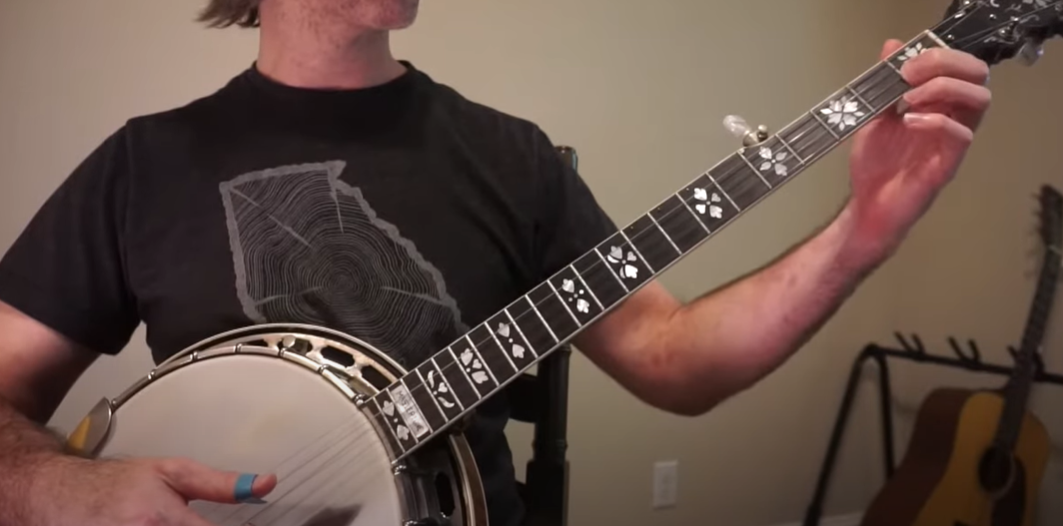
Amazing Grace
“Amazing Grace” is another slow banjo song that has managed to etch its place in the hearts of millions across the globe. Originally a Christian hymn penned by English poet and cleric John Newton in 1779, the song has transcended its religious roots to become a widely recognized traditional tune. This song, often played on the banjo in a slow, soulful rendition, is a testament to the instrument’s ability to communicate deep emotion. The plucking of the banjo strings in “Amazing Grace” produces an ethereal melody that complements the song’s message of redemption and hope. A staple in American folk music, “Amazing Grace,” when played on the banjo, is a beautiful blend of tradition and emotion.[1]
Beautiful Dreamer
“Beautiful Dreamer” is an enchanting slow banjo song that dates back to the 19th century. This song, the creation of American songwriter Stephen Foster, is a serene lullaby that has survived the test of time, continuing to captivate listeners with its soothing melody. The song is often played on the banjo using a slow, rhythmical pattern that accentuates the dreamy quality of the lyrics. The banjo’s unique tone imbues “Beautiful Dreamer” with a nostalgic feel, transporting the listener to a tranquil world of dreams. The sense of peace and tranquility elicited by this composition exemplifies the charm of slow banjo music, and cements “Beautiful Dreamer” as a beloved classic in this genre.[1]

Just a Closer Walk
“Just a Closer Walk with Thee” stands out as a quintessential slow banjo tune, deeply rooted in American gospel tradition. The song, whose exact origin remains unclear, gained popularity in the earlier half of the 20th century. It is considered a hymn of humble submission, a longing plea for guidance and support in times of strife and uncertainty. When performed on the banjo, the song takes on a diverse range of emotional tones. The slow, deliberate plucking of the strings imparts a profound solemnity, while the inherent twang of the banjo adds a raw, earthy texture that blends perfectly with the song’s spiritual theme. Played at a slower tempo, “Just a Closer Walk with Thee” becomes a poignant exploration of faith and surrender, illustrating the banjo’s remarkable versatility in capturing deep emotional nuances.[1]
Ashokan Farewell
“Ashokan Farewell” is a contemporary slow banjo song that has garnered fame and recognition far beyond its original context. This hauntingly beautiful piece was composed by Jay Ungar in 1982, originally as a farewell waltz for the annual Ashokan Music & Dance Camps held in New York. However, the song gained widespread popularity when it was used as the theme for the PBS miniseries “The Civil War.” The gentle, melancholic strains of the banjo in “Ashokan Farewell” evoke a sense of longing and nostalgia, resonating with listeners on a deeply emotional level. The song’s slow tempo and its reflective, almost mournful melody, have ensured its enduring popularity, not just within the banjo community, but also among a broader audience. As a slow banjo song, “Ashokan Farewell” stands as a testament to the instrument’s capacity to evoke powerful emotions and create lasting impressions.[1]
Wayfaring Stranger
“Wayfaring Stranger” stands as a venerable anthem in the realm of slow banjo songs. Its exact origins remain shrouded in mystery, but it is widely accepted as a traditional American folk and gospel song, speaking of perseverance and hope amid life’s trials. The song’s narrative, sung from the perspective of a solitary traveler journeying through life, is poignantly echoed in the plaintive notes of a slow-played banjo. The instrument’s distinctive timbre and the measured pace of the melody meld to create a deeply affecting soundscape, enhancing the song’s themes of alienation and longing. The haunting quality of the banjo, coupled with the profound sense of introspection evoked by the lyrics, render “Wayfaring Stranger” a compelling testament to the emotive power of slow banjo tunes.[1]
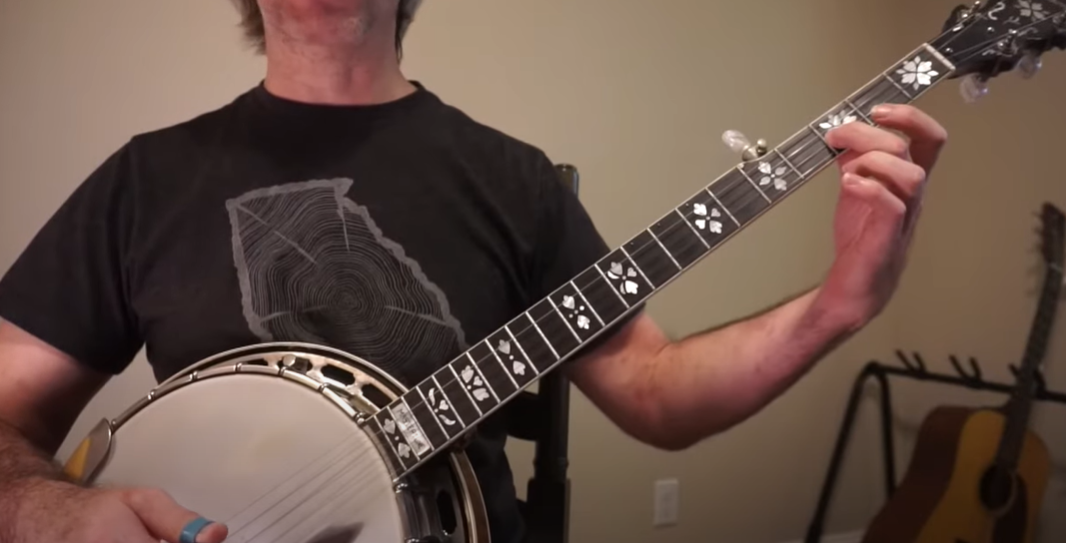
Silent Night
“Silent Night” is a beautiful example of a slow banjo song that takes an iconic Christmas carol and imbues it with the unique warmth and charisma of the banjo. Originally composed by Franz Xaver Gruber in Austria in 1818, the song’s simple melody and peaceful lyrics have made it a beloved staple of the holiday season. When played on the banjo, “Silent Night” takes on a new dimension of contemplative serenity. The slow, deliberate plucking of the strings enhances the quiet, nocturnal theme of the song, transforming it into a lullaby of tranquility that is unmistakably poignant. The song’s evocative lyrics, combined with the distinctive resonance of the banjo, make “Silent Night” a compelling illustration of the instrument’s ability to deepen and enrich the emotional impact of a song.[1]
FAQ
Did Led Zeppelin use banjo?
Yes, the legendary rock band Led Zeppelin did incorporate the banjo into their music, showcasing their versatility and willingness to experiment with different musical styles. Notably, the band’s multi-talented guitarist, Jimmy Page, renowned for his exceptional skills on various instruments, including the banjo, added a unique and rustic dimension to their sound. One of the most iconic examples of Led Zeppelin’s use of the banjo can be found in the song “Gallows Pole” from their third album. This folk song, adapted from traditional sources, features Page’s fast-paced banjo playing, which further expands the boundaries of rock music. By integrating the banjo into “Gallows Pole,” Led Zeppelin exemplified their pioneering spirit and left a lasting influence on the rock music landscape. Their willingness to explore new sounds and incorporate unconventional instruments like the banjo illustrates their unwavering commitment to pushing artistic boundaries and creating music that resonates with audiences worldwide. Led Zeppelin’s experimentation with the banjo serves as a testament to their innovative approach and continues to inspire musicians to explore new possibilities within the realm of rock music.
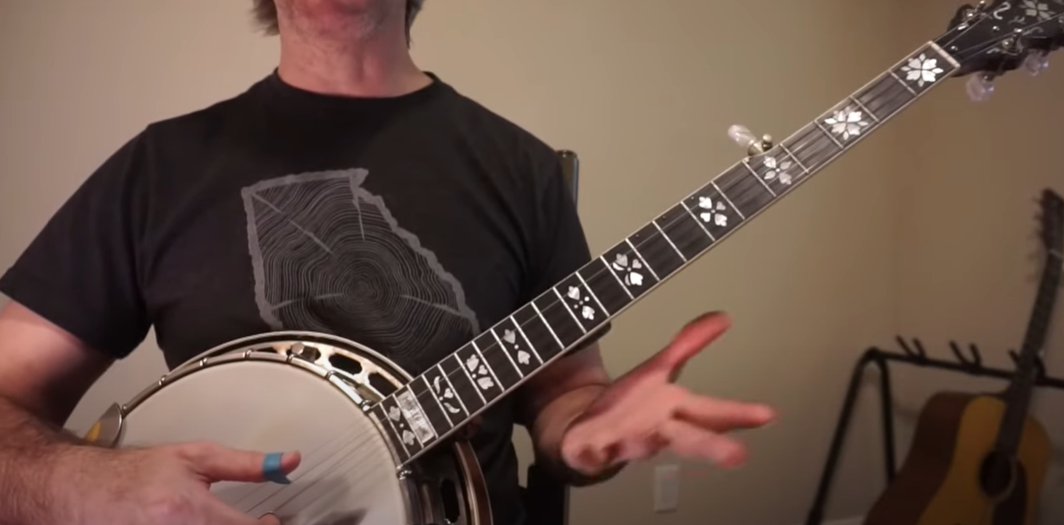
What are the easy gospel songs to play on the banjo?
The simplicity and emotion of gospel music make it a great genre to explore on the banjo for both beginners and intermediate players. Here are a few recommendations:
- “Amazing Grace” – This is perhaps one of the most recognized gospel songs around the world. Its simple melody and 4/4 timing make it an ideal song for beginners to start with on the banjo. The song can be played in a variety of styles, including clawhammer and bluegrass, allowing players to experiment with different techniques.
- “Will the Circle Be Unbroken” – This classic gospel song is another great choice for banjo players. The song’s structure is straightforward, making it easy for beginners to pick up. Its repetitive melody also provides a great opportunity to practice and improve your picking skills.
- “I’ll Fly Away” – Known for its uplifting message and melody, “I’ll Fly Away” is a popular choice for banjo players. The song is usually played at a moderate tempo, making it manageable even for beginners.
- “Down to the River to Pray” – This song gained popularity after it was featured in the film ‘O Brother, Where Art Thou?’. The simplicity of its melody and chord progression make this song an excellent choice for novice banjo players.
- “Old Time Religion” – This is a traditional gospel song that is quite straightforward to play on the banjo. Its repetitive tune and simple chord progression make it an ideal song for beginners.
Remember, learning to play any new song on the banjo requires patience and practice. Don’t be discouraged if you don’t get it right away. With time, you’ll find your rhythm and flow.
What genre is banjo music?
Banjo music is not confined to a single genre, but rather, it effortlessly traverses various musical styles, showcasing its versatility and capturing the hearts of listeners across different musical preferences. With its rich history and distinct sound, the banjo has become an iconic instrument deeply rooted in traditional American music genres like folk, bluegrass, and country music. However, its influence extends far beyond these genres.
The banjo has its origins in African-American traditional music, where it played a significant role in shaping the blues genre. Its soulful and resonant tones added depth and emotion to the heartfelt melodies. Over time, the banjo has also found its way into other genres, surprising and delighting audiences with its adaptability.
In more recent years, the banjo has made its mark in unexpected places, such as rock music. Bands like Led Zeppelin have embraced the banjo’s unique sound, incorporating it into their compositions and expanding the instrument’s horizons. Additionally, the banjo has found a harmonious home in gospel music, infusing spiritual songs with a warm and resonant timbre that elevates the message of faith.
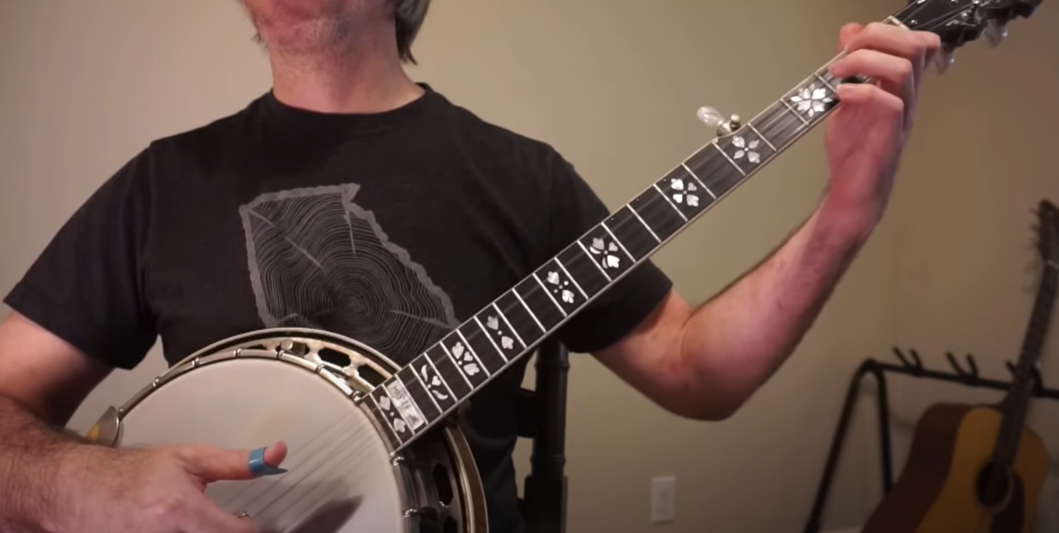
Indeed, the genre of banjo music is as diverse and vibrant as the musicians who play it. It encompasses a broad spectrum of styles and influences, each contributing to the ever-evolving tapestry of banjo melodies. Whether it’s the spirited twang of bluegrass or the soul-stirring notes of the blues, the banjo continues to captivate and inspire, transcending boundaries and forging connections through its timeless music.
Is there a banjo to take it easy?
Indeed, for those looking to embark on their banjo music journey without feeling overwhelmed, there are specific types of banjos that are known to be beginner-friendly. One such option is the open-back banjo, which is an excellent choice for beginners due to its lighter weight and easier handling compared to some other types. Moreover, it is particularly well-suited for the clawhammer playing style, which many beginners start with.
Another beginner-friendly option is the Concert Banjo Ukulele. This banjo is smaller in size, making it even more manageable for beginners. Additionally, it offers a soft and mellow tone that is forgiving for novices, allowing them to explore their musicality comfortably.
Furthermore, the four-string tenor banjo is another great choice for beginners, especially for those who may already have some experience with the guitar or ukulele, as it is tuned similarly. This familiarity can make the transition to the banjo smoother and more accessible for those starting out.
While these banjos provide a more approachable entry point, it is important to remember that mastering any instrument requires patience and consistent practice. So, embrace the journey, enjoy the learning process, and watch your banjo skills blossom over time!
Is clawhammer banjo hard?
The difficulty of learning the clawhammer style on the banjo can vary depending on one’s musical background, dedication to practice, and overall familiarity with string instruments. Generally, it is considered a challenging technique due to its distinctive ‘down-picking’ approach. In this style, the strumming hand takes on a claw-like shape, and the strings are struck in a downward motion, creating a unique and rhythmic sound.
Compared to the conventional picks or ‘up-picking’ methods used in many other string instruments, the clawhammer style can initially appear daunting for beginners. However, with consistent practice, patience, and a solid foundation in basic banjo playing techniques, many aspiring musicians find the rhythm and repetitive motion of the clawhammer style gradually becoming second nature.
It is worth noting that the difficulty of learning the clawhammer banjo can be mitigated by starting with an open-back banjo, which is often preferred for clawhammer style playing. The open-back design produces a mellower and warmer tone, allowing beginners to focus more on mastering the intricate finger movements and rhythmic patterns associated with this style.
Ultimately, despite its initial challenges, learning the clawhammer banjo can be an immensely rewarding experience. It provides a unique and rich sound that is deeply ingrained in many traditional and folk genres of music, allowing musicians to connect with the rich cultural heritage associated with this instrument.
Is clawhammer banjo easier?
The perception of the clawhammer banjo being ‘easier’ or ‘harder’ is subjective and depends on an individual’s prior musical experience and personal aptitude. Typically, learning the clawhammer technique can be initially challenging due to its unique ‘down-picking’ style, which requires precise coordination and finger dexterity. However, once the fundamental technique is mastered, many players find the clawhammer style to be not only easier but also more fluid and expressive compared to other banjo playing methods.
The beauty of the clawhammer technique lies in its rhythmic and repetitive motion, which becomes increasingly intuitive with practice. The melodic patterns and syncopated rhythms produced by the clawhammer style lend themselves perfectly to certain genres of music, particularly old-time folk and Appalachian tunes. The resonant and earthy tones of the clawhammer banjo evoke a sense of nostalgia and authenticity that is deeply rooted in traditional American music.
Another advantage of the clawhammer style is that it does not require the use of fingerpicks, which some players find cumbersome or uncomfortable. This allows for a more direct connection between the player’s fingers and the banjo strings, resulting in a more tactile and nuanced playing experience.
However, it’s important to note that while the clawhammer style has its strengths, it may not be the most suitable technique for every musical genre. If your goal is to play bluegrass or jazz, for example, you may find other banjo playing styles like Scruggs or melodic style more fitting, as they offer different tonal possibilities and techniques that are better suited to those genres.
Regardless of the banjo style you choose to pursue, whether it be clawhammer, Scruggs, melodic, or any other, one thing remains constant: regular practice and patience are the keys to achieving proficiency and mastery. With dedication and a love for the instrument, the banjo can become a lifelong musical companion, allowing you to express your creativity and share your love for music with others.
Useful Video: Steve Martin – Sad Mood Banjo
Conclusion
The banjo, with its distinctive, resonant sound, is a versatile instrument that spans multiple genres, from folk and bluegrass to gospel and rock. For beginners, the clawhammer style, with its rhythmic and repetitive motion, offers an excellent entry point into the world of banjo playing. While it may seem challenging initially, consistent practice can make the clawhammer style fluid and intuitive. Remember, the key to mastering any instrument, including the banjo, lies in patience and regular practice. Whether you’re drawn to the uplifting melodies of gospel songs or the rich traditions of folk music, the banjo offers a world of musical exploration. So pick up your banjo, and let your musical journey begin!
References:
- https://jodyhughesmusic.com/18-slow-songs-for-the-banjo/




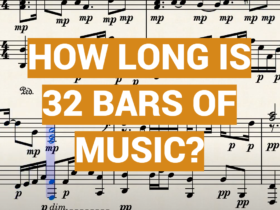
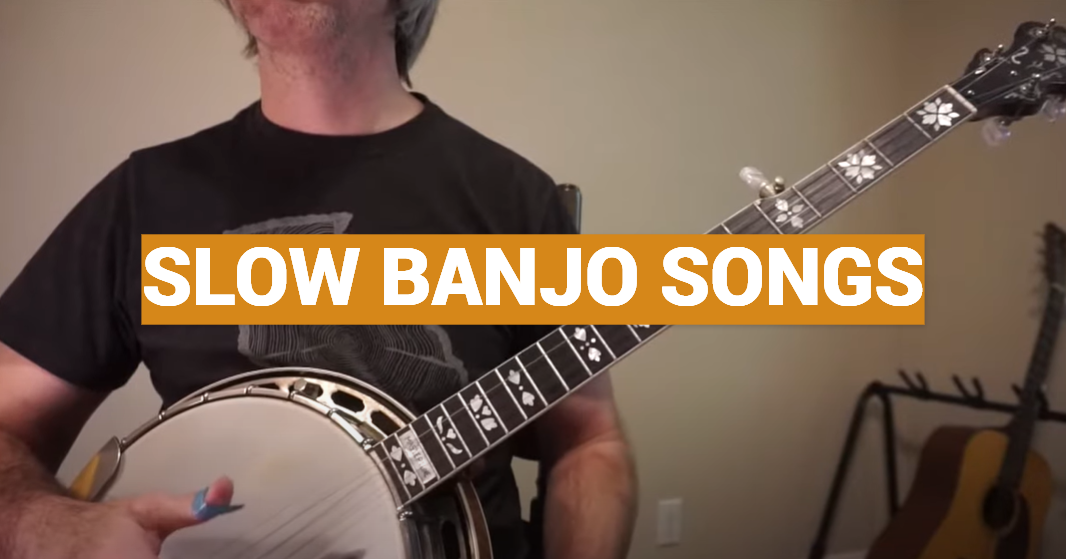
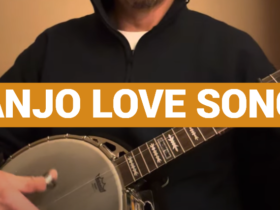


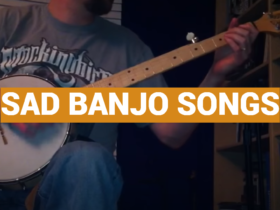
Leave a Reply